#CRM software pricing
Explore tagged Tumblr posts
Text
#CRM sales#CRM solutions#customer management system#CRM software#customer relationship management#CRM implementation#business CRM#LionO360 CRM sales team#LionO360 CRM Demo#sales lead#ai automation#powered by ai#ai and CRM#increase sales strategy#CRM software pricing
0 notes
Text
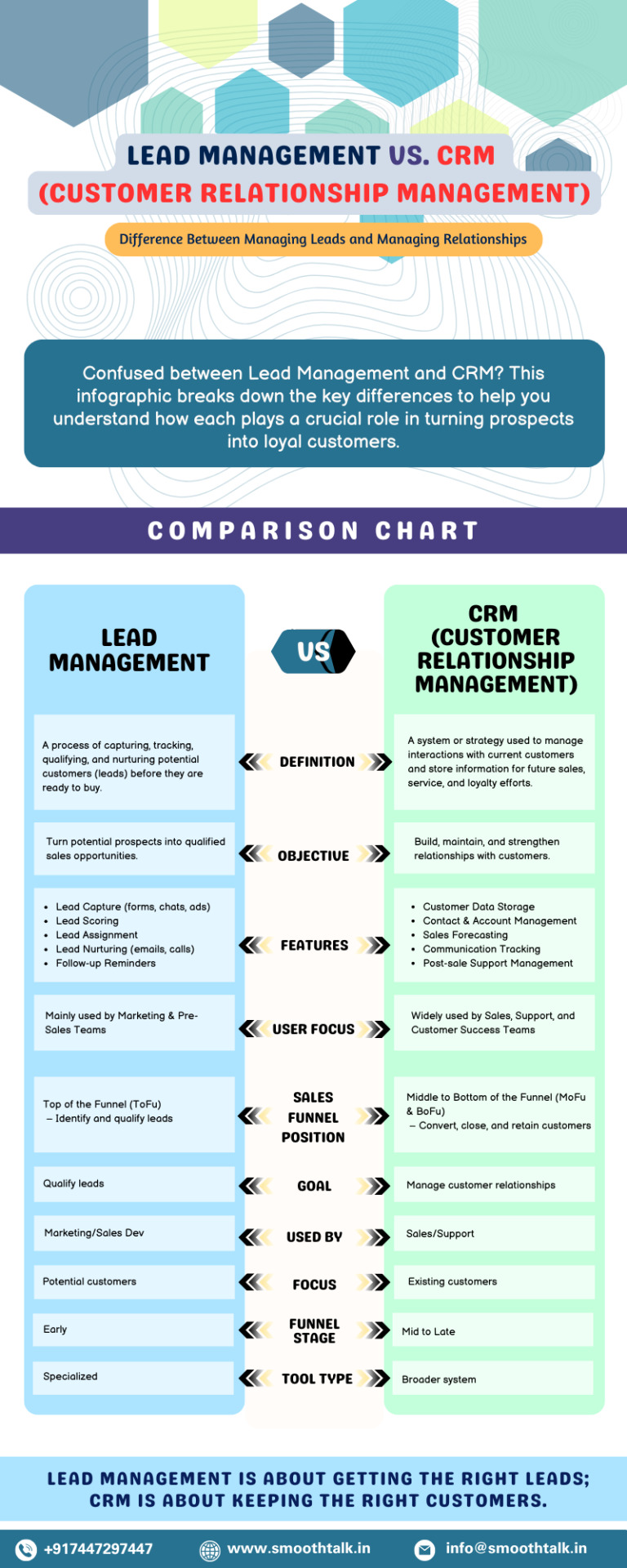
If you’ve ever mixed up these two key systems, you’re not alone. Our latest infographic breaks down their roles, features, and where they fit in the sales funnel.
💡 Learn when to focus on capturing leads vs nurturing customer relationships.
📊 Perfect for marketers, sales teams, and business owners looking to streamline their process.
🔗 Check it out and share your thoughts!
#LeadManagement #CRM #SalesTools #MarketingStrategy #B2BSales #CustomerEngagement #LeadGeneration #SalesEnablement #BusinessGrowth #Infographic
👉 Save & Share if this helps you clarify your strategy!
#lead management pricing#sales lead management software#lead management software#crm#leadmanagement#lead tracking
0 notes
Text
Field Sales Automation in the Post-Budget Era: Why Now is the Right Time to Invest
Introduction
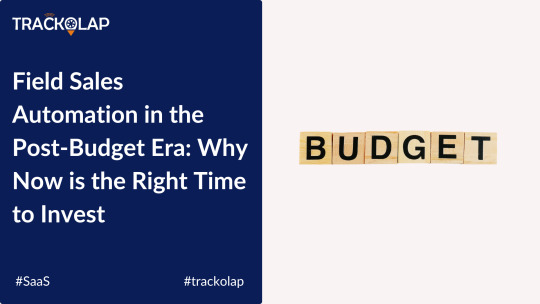
The Evolution of Field Sales in the Digital Era
Traditionally, field sales operations relied heavily on manual processes, paper-based reporting, and minimal real-time insights. Sales representatives often faced challenges such as inefficient route planning, lack of timely communication, and difficulty tracking client interactions. However, with the rise of digital transformation, businesses have recognized the need for automated solutions that enhance field sales efficiency.
Key challenges of traditional field sales:
Lack of real-time tracking and accountability
Time-consuming manual reporting
Poor route optimization leading to reduced productivity
Inconsistent follow-ups and customer engagement
Limited visibility into sales performance metrics
Post-budget, companies must focus on cost-effective strategies that maximize salesforce efficiency while keeping operational expenses under control. This is where field sales automation, particularly with tools like TrackOlap, plays a crucial role.
Why Now is the Right Time to Invest in Field Sales Automation
1. Budget Realignments Favor Digital Transformation
Governments worldwide are pushing for technology-driven growth, incentivizing businesses to invest in automation and digital transformation. With many companies reallocating budgets towards tech-driven solutions, adopting field sales automation ensures long-term cost savings and improved sales efficiency.
2. Enhanced Sales Team Productivity
A well-implemented automation tool like TrackOlap empowers sales teams with real-time tracking, lead automation, expense management, target management. Instead of spending hours manually updating sales reports, sales reps can focus on closing more deals and engaging with potential clients.
3. Cost Savings and Operational Efficiency
Manual processes in field sales lead to hidden costs, including administrative overhead, fuel expenses from inefficient routes, and missed sales opportunities due to poor follow-ups. Automation reduces these inefficiencies by optimizing sales routes, ensuring timely customer interactions, and eliminating manual data entry.
4. Improved Compliance and Accountability
Post-budget regulatory changes might necessitate increased compliance for businesses. Field sales automation ensures that organizations can track employee activities, maintain digital records, and generate real-time reports for compliance purposes. With TrackOlap’s geo-tagging and attendance tracking features, businesses can ensure accurate reporting and prevent fraudulent activities.
5. Data-Driven Decision Making
Automation provides real-time analytics, enabling managers to make informed decisions based on sales trends, customer behavior, and field agent performance. TrackOlap offers customizable dashboards that provide valuable insights into sales operations, helping businesses tweak their strategies for maximum effectiveness.
How TrackOlap’s Features Help in Field Sales Automation
1. Real-Time GPS Tracking
One of the major challenges in field sales is tracking employee movement and ensuring they visit assigned locations. TrackOlap’s real-time GPS tracking feature provides live updates on sales representatives’ locations, ensuring complete transparency and accountability.
2. Automated Attendance & Check-in System
TrackOlap eliminates the need for manual attendance marking. Field agents can check in using the mobile app, allowing managers to monitor attendance records and working hours without discrepancies.
3. AI-Powered Route Optimization
Fuel and time inefficiencies are common issues in field sales. TrackOlap’s route optimization feature ensures that sales reps take the most efficient path, reducing travel costs and increasing the number of client visits per day.
4. Instant Communication & Task Assignment
Through the instant task assignment, managers can assign tasks to sales reps on the go. Notifications and alerts keep sales representatives updated about their daily schedules, ensuring a structured workflow.
5. Automated Sales Reporting & CRM Integration
TrackOlap offers automated sales reporting, reducing the time spent on manual report submissions. Seamless integration with CRM tools ensures that all customer interactions, lead updates, and sales activities are automatically recorded.
6. Performance Analytics & Insights
TrackOlap analytics features provide detailed reports on sales performance, customer interactions, and conversion rates. Businesses can use these insights to reward top performers, identify areas of improvement, and refine their sales strategies.
Conclusion
As businesses navigate the post-budget era, investing in field sales automation is no longer an option but a necessity. Tools like TrackOlap provide a comprehensive solution to enhance sales productivity, reduce costs, and improve decision-making through real-time analytics. By automating field sales operations, businesses can stay ahead of the competition, ensure regulatory compliance, and drive long-term growth.
If your organization is looking to maximize field sales efficiency, now is the perfect time to invest in TrackOlap’s advanced automation features and revolutionize your sales operations.
#field sales software#employee tracking#field tracking app#Field sales app#Field sales automation#Employee tracker app#Field Sales CRM Price#field sales automation software
0 notes
Text
Boost Your Business with Zoho CRM – The Ultimate Automation Solution
0 notes
Text
Best CRM software in India
Explore our latest infographic on CRM trends! Discover the future of customer relationship management (CRM) and how the best CRM software in India is transforming business interactions. This visual guide offers quick insights into emerging CRM solutions and key trends shaping 2024, making it essential for businesses aiming to stay competitive.
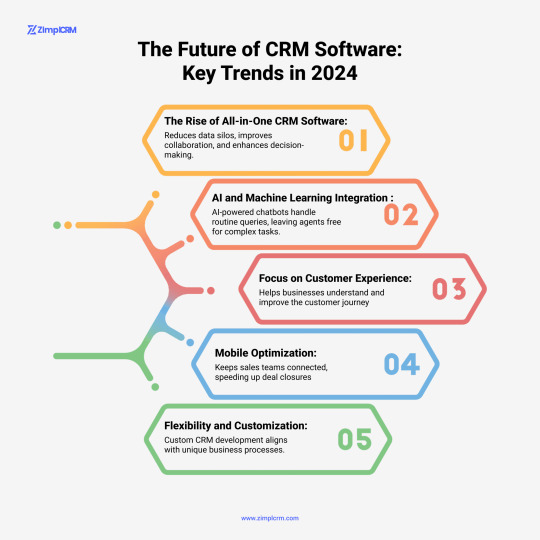
#Best CRM Software in India#customer relationship management#CRM Solution#crm features#CRM management software#Crm pricing#CRM software price in India#Custom CRM Software#CRM Development Services India#CRM platform
1 note
·
View note
Text
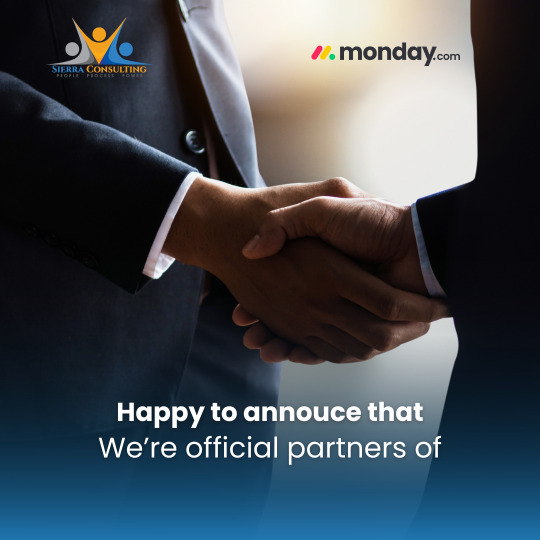
Partnering with Monday.com empowers businesses with streamlined CRM services, offering versatile tools for effective customer relationship management. As a partner, you can leverage Monday.com’s robust CRM capabilities to deliver tailored solutions that boost productivity and efficiency. Working with Monday.com allows you to craft customized CRM strategies that fit your client's needs, from improving customer engagement to refining sales processes and enhancing team collaboration.
#it#it jobs#tech#technology#current events#technews#sierra consulting#crm benefits#crm services#crm#crm price#monday crm#crm software monday#crm tool monday
0 notes
Text
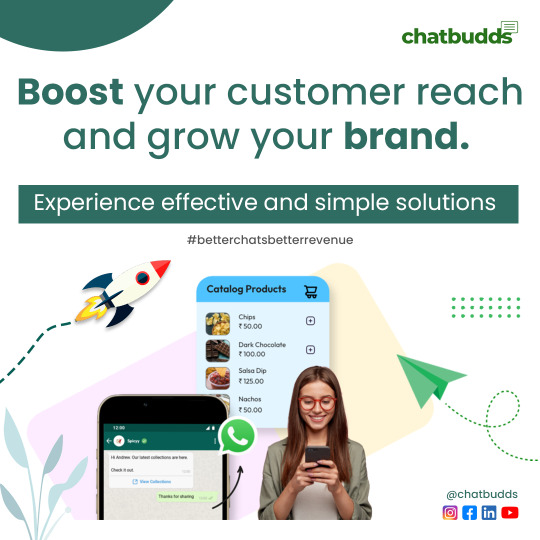
Websites with live chats enhance customer support by providing real-time assistance, improving user experience and satisfaction.
#whatsapp marketing tools#whatsapp marketing#whatsapp marketing software#whatsapp crm#whatsapp for business#whatsapp business marketing#whatsapp business tools#whatsapp chatbot pricing#whatsapp platform for business#whatsapp integration for business#whatsapp business api#whatsapp api pricing#whatsapp marketing api#websites with live chats#bot live chat
0 notes
Text
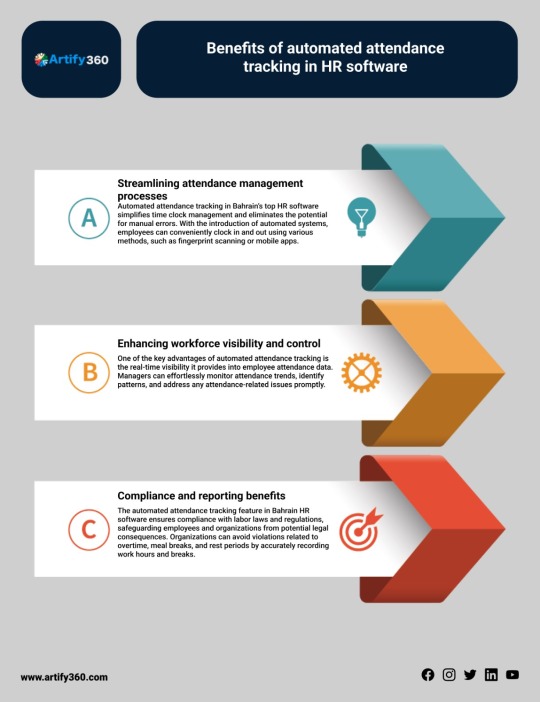
Best HR Software Providers in Bahrain
Enhance your HR and payroll processes with the best HR software in Bahrain. Our HR and payroll software Bahrain offers cloud-based HR management, HR CRM software, and comprehensive solutions for small businesses and SMEs.
#hr management software bahrain#hr & payroll software bahrain#hr payroll software bahrain#best hr software in bahrain#hr and payroll software bahrain#hr and payroll software in bahrain#hr crm software#best hr software for small business#best hr management software#sme hr software#hr management software for small business#hr and payroll software#hr software companies#hr software for small business#hr payroll software#hr attendance software#hr software pricing#best hr software#cloud based hr management software#cloud based hr software#hr application software#hr management software
0 notes
Text
CRM Secrets for Small Business Owners: Drive Growth and Success
In the complex world of business, one tool that has set the stage for a turning point, especially for small business is the Customer Relationship Management (CRM). Even though most business owners may think they know what a CRM does, there are still many fact about CRM and how it can be a boon to your small business, unknown. This article expands on these facets, which are often underexplored, and seeks to provide the small business owner with knowledge essential to growth and prosperity.
CRM Strategy for a Small Business
CRM system should be able to support a business’s communication with its existing and potential clients. CRM employs information concerning customers’ experience with a certain firm to optimize business interactions, with the primary aim being customer intimacy and volume expansion. However, CRM for a small business is much broader and has a more extensive application than just the functionalities above.
Unknowing Facts about CRM
Data Centralization:
Another important aspect of CRM is its capability in managing customer data centrally which is usually overlooked. For small businesses, this means having to store all customer data in one central location that is easily shareable with all stakeholders in the organization. This can include contact details, buying records, and any other activity details that may relate to the customer. Since leads need to be followed-up promptly and every opportunity mustn’t be lost, this level of organization is important in order to be able to deliver excellent customer service.
2. Automation Capabilities:
Small business managers may not fully appreciate CRM’s capability to effectively manage and streamline usually mundane tasks. Apart from the follow-up emails, appointment setting, and report generation, most CRM systems are capable of dealing with a number of administrative responsibilities. It is not just time-saving, but it also eliminates the possibility of human mistakes and helps business owners and their teams to work on other more important tasks.
3. Enhanced Customer Insights:
The implementation of CRM systems ensures that an organization has detailed information related to customers. Analyzing patterns and trends allows small businesses to act more specifically in meeting the needs of the customer in its marketing. This data-centric approach leads to more effective marketing campaigns and a higher return on investment.
4. Improved Collaboration:
In small and mid-sized organizations, where cross-functional employees may be involved in several activities, CRM solutions enhance communication. It allows the team members to exchange information with each other, monitor the development of certain leads to the sales, and collaborate on a task without compromising on the efficiency and effectiveness of the work done. This levels of communication makes work more efficient and effective since it removes bottlenecks and misunderstanding.
5. Scalability:
There are usually concerns among small business managers as to how the businesses will expand. Today’s CRM technologies help organisations grow with them. They can scale up to accommodate enhanced data load and number of users without a significant loss in efficiency. It means that your CRM remains flexible and can easily adapt to the new conditions and needs of your business as it evolves.

CRM: Its Utility to Small Enterprises
1.Customer Retention and Loyalty:
CRM systems assist the small business to engage with its clients and attend to their needs through personalization. Organizations, by analyzing customer choice and behavior, are able to adjust their interaction with them, and this results in customer satisfaction and pursue. Customer loyalty is a significant advantage for your business since the consumers will become regular buyers and can even refer other clients to the business.
2. Increased Sales and Revenue:
Due to the simplification of the sales cycle and offering valuable information about the customers, CRM systems are effective in availing new business opportunities to the small businesses. They can also monitor leads, build pipelines and predict sales with more accuracy. This results in higher sales productivity as well as better revenues.
3. Better Decision Making:
Specific data and reports which are available to small business owners help them towards making better decisions. Essentials of CRM systems include capacity to generate huge information on sales and marketing activities, customer activity, and the general market. This information assists the organizations to know their strongholds, challenges, opportunities, and threats hence making the right decision on the advancement of the businesses.
4. Cost Savings:
One may find the beginning cost of implementing a CRM system high, but ultimately the price is worth the gain in the long run. CRM systems enable small companies to save time and avoid costly mistakes through automation of several processes. Additionally, the insights gained from CRM data can lead to more effective marketing campaigns and better resource allocation.
Conclusion
In conclusion, CRM for a small business is not just a tool for managing customer relationships; it is a powerful system that can drive growth and success. By understanding the unknowing facts and leveraging the full capabilities of a CRM system, small business owners can enhance their operations, improve customer satisfaction, and achieve sustainable growth. Adopting a CRM system is a strategic investment that can provide a competitive edge in today’s fast-paced business environment. Resource: https://justpaste.it/asllp
0 notes
Text
How can Loan Origination Software help you?
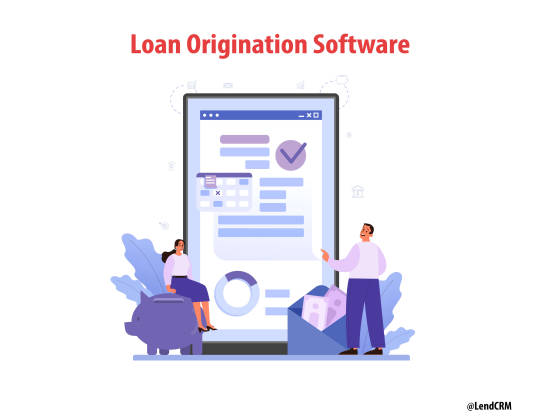
The loan origination system is an application that allows banks or any financial institutes to produce loans efficiently in sync with internal and statutory regulations. A perfect CRM-based loan origination software can handle the entire loan management system- from loan application, and loan processes to payment tracking. The best loan origination software makes things convenient for borrowers by making loan applications easy. The primary objective of loan origination applications is to enable banks and credit institutes to achieve their strategic goals. A cloud-based loan origination platform with robust CRM features helps financial organizations automate their end-to-end loan process. A perfect loan origination tool enables you to • Reduce the risk of lending while ensuring utmost compliance with regulations • Slash the waiting time for loan approvals, thus leading to better customer satisfaction • Improve the organization's credit portfolio
How to select the best loan origination software for your organization?
Loan origination software should perform several essential tasks to automate the end-to-end process. The cloud-based loan origination platform should come with some critical features. These features are-
Easy to adopt and use:
Organizations should be able to integrate the loan origination software easily into their existing system. The best loan origination tool allows anyone with basic knowledge to use it with a challenge. Scalable and customizable: An ideal loan origination software should allow customers to customize the solution to meet their unique requirements. The application should be able to accommodate any requirement in the future. With the growth of an organization, it becomes difficult to implement new loan origination software.
Data security:
Data security is an integral part of every system. Specifically, in the banking and financial industry, the security and privacy of customer data play vital roles. The loan origination system should have robust data security features. It's crucial to check data security features before investing in an application.
Perfect financial analysis:
The perfect loan origination system should come with an analysis feature that helps you take insights from credit decisions to make the right financial decisions.
Market Experience:
Choose a vendor with a proven track record, especially in the lending domain. The vendor should be well-familiar with the lending business, the steps of loan origination, and all the technical nuances of loan automation.
Document and contract management:
A robust document portal allows your prospects to upload all the required documents to process, Underwrite, and close the loans. The document portal comes with a contract management facility that enables you to build templates using the contract builder and update templates with loan terms and all necessary information. Seamless communication between departments: An efficient loan origination tool enables you to build a seamless communication channel between various departments like relationship managers, credit analysts, credit committees, and senior executives.
24/7 customer care:
A loan origination software vendor should offer their customers 24/7 interactive customer care support. Technical issues are unpredictable, therefore, a team of dedicated customer care support should be there 24/7. It can be an overwhelming experience for you to choose the perfect loan origination software as there are many vendors. We recommend you opt for LendCRM as it is one of the best cloud-based loan origination software with strong CRM features.
#Cloud Based Loan#Loan Origination Software Pricing#Loan Manager Pricing#Lending CRM#Mortgage Originator Software#CRM Loan
0 notes
Text
Salesforce CPQ: How to Use it for a Sustainable Future
In today's rapidly evolving business landscape, companies are not only expected to deliver top-notch products and services but also to do so in a sustainable and responsible manner. Sustainability is no longer just a buzzword; it's a driving force for positive change. Salesforce CPQ (Configure, Price, Quote) is a powerful tool that can help businesses not only streamline their sales processes but also contribute to a sustainable future.
Understanding Salesforce CPQ
Salesforce CPQ is a Salesforce-native solution designed to help businesses automate and optimize their configure, price, and quote processes. It enables sales teams to generate accurate and professional quotes, improve pricing strategies, and simplify the sales cycle. However, Salesforce CPQ's impact goes beyond just sales efficiency. It can be a game-changer in promoting sustainability within an organization.
The Intersection of CPQ and Sustainability
Reducing Environmental Impact: The traditional manual quote generation process involves printing documents, using resources, and contributing to a company's carbon footprint. Salesforce CPQ eliminates the need for physical documents by generating digital quotes and contracts. This not only reduces paper waste but also minimizes transportation-related emissions since everything can be shared electronically.
Energy Efficiency: By streamlining the quoting process, Salesforce CPQ can help your sales team work more efficiently, saving both time and energy. With automated workflows, you can reduce the number of clicks, tasks, and manual processes, resulting in significant time and energy savings.
Optimizing Resource Utilization: Salesforce CPQ allows businesses to better manage their product configurations, pricing, and quoting, reducing the risk of overproduction or wastage. This optimization can help companies minimize their environmental impact by producing and selling only what is needed.
Remote Work and Reduced Commuting: Salesforce CPQ supports remote work, reducing the need for employees to commute to the office. This shift towards telecommuting has the potential to decrease traffic congestion, lower fuel consumption, and decrease greenhouse gas emissions.
Empowering Sustainable Business Decisions
Salesforce CPQ not only aids in sustainable practices but also provides valuable insights that can inform environmentally responsible decisions. Here's how:
Data Analytics: CPQ generates valuable data related to sales, quotes, and product configurations. This data can be leveraged to make informed decisions about product lines and pricing strategies that align with sustainability goals.
Real-time Collaboration: The platform enables real-time collaboration between sales teams, distributors, and customers. This reduces the need for in-person meetings and travel, contributing to reduced carbon emissions.
Automated Approval Processes: With Salesforce CPQ, businesses can set up automated approval processes, which ensure that pricing and discounts align with sustainability guidelines and corporate social responsibility (CSR) policies.
The Path Forward
Incorporating Salesforce CPQ into your business's operations is a clear step towards a more sustainable future. It optimizes processes, reduces waste, and provides data-driven insights for informed decisions. By embracing this technology, you're not only improving the efficiency of your sales processes but also actively contributing to a greener and more sustainable planet.
As businesses continue to evolve and prioritize sustainability, Salesforce CPQ is a tool that can help organizations thrive in an environmentally conscious world. It's time to bridge the gap between sales and sustainability and make a positive impact on our planet's future.
Embrace Salesforce CPQ, and together, let's create a more sustainable and prosperous future for all.
#Salesforce CPQ#CPQ Software#Salesforce CRM#Sustainability Solutions#Sustainable Business Practices#Configure Price Quote#Sustainable Sales Strategies#CPQ Implementation#CPQ for Sustainability#Eco-Conscious Sales Processes
0 notes
Text

How to Choose the Best CRM Software for Your Business
Choosing the right CRM software for your business is a big decision — and the right one can make a world of difference. Whether you’re running a small startup or managing a growing company, having an effective CRM (Customer Relationship Management) system helps you keep track of customers, boost sales, and improve overall productivity. Let’s walk through how you can choose the best CRM for your business without getting overwhelmed.
Why Your Business Needs a CRM
A CRM isn’t just a tool — it’s your business’s central hub for managing relationships. If you’re still relying on spreadsheets or scattered notes, you’re probably losing time (and leads). A good CRM helps you:
Keep customer data organized in one place
Track leads, sales, and follow-ups
Automate routine tasks
Get insights into sales performance
Improve customer service
The goal is simple: work smarter, not harder. And with an affordable CRM that fits your needs, you’ll see faster growth and smoother processes.
Define Your Business Goals
Before diving into features, figure out what you actually need. Ask yourself:
Are you trying to increase sales or improve customer service?
Do you need better lead tracking or marketing automation?
How big is your team, and how tech-savvy are they?
What’s your budget?
Knowing your goals upfront keeps you from wasting time on CRMs that might be packed with unnecessary features — or worse, missing key ones.
Must-Have Features to Look For
When comparing CRM options, focus on features that truly matter for your business. Here are some essentials:
Contact Management – Store customer details, interactions, and notes all in one place.
Lead Tracking – Follow leads through the sales funnel and never miss a follow-up.
Sales Pipeline Management – Visualize where your deals stand and what needs attention.
Automation – Save time by automating emails, reminders, and data entry.
Customization – Adjust fields, workflows, and dashboards to match your process.
Third-Party Integrations – Ensure your CRM connects with other software you rely on, like email marketing tools or accounting systems.
Reports & Analytics – Gain insights into sales, performance, and customer behavior.
User-Friendly Interface – If your team finds it clunky or confusing, they won’t use it.
Budget Matters — But Value Matters More
A CRM doesn’t have to cost a fortune. Plenty of affordable CRM options offer robust features without the hefty price tag. The key is balancing cost with value. Don’t just chase the cheapest option — pick a CRM that supports your business growth.
Take LeadHeed, for example. It’s an affordable CRM designed to give businesses the tools they need — like lead management, sales tracking, and automation — without stretching your budget. It’s a smart pick if you want to grow efficiently without overpaying for features you won’t use.
Test Before You Commit
Most CRMs offer a free trial — and you should absolutely use it. A CRM might look great on paper, but it’s a different story when you’re actually using it. During your trial period, focus on:
How easy it is to set up and start using
Whether it integrates with your existing tools
How fast you can access and update customer information
If your team finds it helpful (or frustrating)
A trial gives you a real feel for whether the CRM is a good fit — before you commit to a paid plan.
Think About Long-Term Growth
Your business might be small now, but what about next year? Choose a CRM that grows with you. Look for flexible pricing plans, scalable features, and the ability to add more users or advanced functions down the line.
It’s better to pick a CRM that can expand with your business than to go through the hassle of switching systems later.
Check Customer Support
Even the best software can hit a snag — and when that happens, you’ll want reliable support. Look for a CRM that offers responsive customer service, whether that’s live chat, email, or phone. A system is only as good as the help you get when you need it.
Read Reviews and Compare
Don’t just rely on the CRM’s website. Read reviews from other businesses — especially ones similar to yours. Sites like G2, Capterra, and Trustpilot offer honest insights into what works (and what doesn’t). Comparing multiple CRMs ensures you make a well-rounded decision.
The Bottom Line
Choosing the best CRM software for your business doesn’t have to be complicated. By understanding your goals, focusing on essential features, and keeping scalability and budget in mind, you’ll find a CRM that fits like a glove.
If you’re looking for an affordable CRM Software that checks all the right boxes — without cutting corners — LeadHeed is worth exploring. It’s built to help businesses like yours manage leads, automate tasks, and gain valuable insights while staying within budget.
The right CRM can transform how you run your business. Take the time to find the one that supports your growth, keeps your team organized, and helps you deliver an even better experience to your customers.
3 notes
·
View notes
Text
Transform Your Business with Zoho CRM
0 notes
Text
What Is EV Charging Management Software?

Let’s get one thing out of the way EV charging isn’t just about plugging into a socket and walking away. Behind that simple user experience is a whole ecosystem that needs to run like a well-oiled (or should we say, well-charged) machine. That’s where EV charging management software steps in.
Think of it as the backend control room that powers everything from session tracking to billing, charger health, and even the queue at your nearest public station. Whether you’re managing a single station or hundreds across locations, this software is what keeps operations clean, trackable, and profitable.
Let’s break this down properly and make sense of what matters especially if you’re planning to get into the EV game with some business sense, not just shiny dashboards.
What is EV Charging Management Software, Really?
In simple words, EV Charging Management Software (CMS) is a centralized system that lets charging station owners, operators, and businesses manage, monitor, and monetize their EV charging infrastructure.
It does everything from:
Authorizing users and vehicles
Monitoring energy usage
Managing peak loads
Automating billing and invoicing
Handling remote diagnostics
And integrating with apps, wallets, and CRM tools
Without it, you'd be managing your EV chargers with spreadsheets, phone calls, and prayers.
Who Needs It?
If you're a fleet operator, public charging station owner, commercial building manager, or even a residential society exploring EV readiness this software isn't a luxury. It's survival gear.
And yes, government projects, retail malls, parking lots, and logistics parks are all getting in on it.
You want uptime, transparency, and ROI? You need a CMS that plays nice with your hardware and grows as your needs change.
What Problems Does It Solve?
Here’s where we skip the fluff and talk about real issues.
1. Energy Load Management
Uncontrolled EV charging can blow up your utility bill or trip the local transformer. CMS helps you control how much energy flows where and when without causing grid panic.
2. Charger Downtime
No operator wants to get that “your charger isn’t working” call at 2 AM. A solid CMS alerts you before users complain. Remote diagnostics and health checks are baked in.
3. User Authentication & Payments
Want to let only subscribed users charge? Want to integrate UPI, cards, or in-app wallets? A proper CMS does all that without you writing a single line of code.
4. Revenue Leakage
Imagine running a business where you're not sure who paid, how much power was delivered, or how many sessions failed. A CMS gives you transaction-level visibility. No guessing games.
5. Scalability
Planning to go from 5 chargers to 50? From 1 location to 12 cities? Your CMS better be ready before your Excel sheet dies of stress.
Must-Have Features (Beyond Just “Dashboard Looks Cool”)
A good EV CMS isn't just eye candy. Here's what you should be checking for:
OCPP Compliance: Plays well with most hardware brands
Dynamic Load Balancing: Keeps your power use smart and optimized
Real-time Monitoring: Know what’s happening where, second by second
Custom Pricing Models: Per minute, per kWh, time-of-day rates you control the game
Fleet & Group Management: Especially if you're running EV fleets or shared chargers
User Access Control: Set roles, permissions, and access levels
White-label Option: Your brand, your logo, your rules
So, Who’s Doing It Right?
There are plenty of software platforms out there that’ll promise the moon until you actually plug them in. But a few players are doing it with serious focus on customization, clean architecture, and real customer support.
Stellen Infotech: Quietly Building the Backbone for EV Ops
While most are busy chasing investor buzzwords, Stellen Infotech is quietly building robust, scalable, and adaptable EV charging software solutions for businesses that actually need to function in the real world.
They’re not just slapping a UI on top of code and calling it a platform. Their stack includes features like:
Custom-built integrations for fleets
White-labeled dashboards
Load optimization modules
Billing and invoicing flexibility
API support for third-party logistics, CRMs, or payment apps
The vibe? Practical tech that doesn’t crash when you scale or cry when you run 100 sessions a day. You’ll notice they’re not trying to be the flashiest just the most dependable in the room. And that’s honestly what most businesses want when dealing with critical infrastructure.
Can’t I Just Build This Myself?
Sure, if you’re sitting on a dev team with grid logic, payment gateway knowledge, OCPP expertise, and UI chops. Otherwise, you’ll spend 18 months burning money, and still end up with something half-baked.
EV management is not just a software challenge it’s a compliance, connectivity, and customer experience challenge. You’re better off working with a team that already figured that out.
What About Hardware Compatibility?
The good ones like Stellen’s platform are built to support OCPP 1.6 and 2.0, meaning they work with a wide range of chargers. You’re not locked into one brand or vendor, which is great because EV hardware isn’t cheap and upgrading just for software issues is bad business.
Final Thoughts: Where This Is Headed
EV charging isn't a novelty anymore. With mandates, subsidies, and rising fuel prices, we’re going to see charging stations pop up like ATMs did in the 2000s. But here’s the thing the ones who’ll stay profitable aren’t the ones who bought the fanciest chargers. It’s the ones who run them smartly.
That’s where EV charging management software earns its keep.
Whether you’re just setting up or scaling across cities, having a solid CMS isn’t optional it’s your operational backbone. Platforms like what Stellen Infotech offers are making this easier for businesses that don’t want to get stuck figuring out load curves and session reports at 11 PM.
And honestly? That’s the kind of tech backbone more EV businesses need not another flashy dashboard with no substance.
2 notes
·
View notes
Text
What Are the Key Factors to Consider When Choosing a Payment Solution Provider?

The rapid growth of digital transactions has made choosing the right payment solution provider a crucial decision for businesses. Whether you operate an e-commerce store, a subscription-based service, or a financial institution, selecting the right provider ensures secure and efficient payment processing. With the increasing demand for fintech payment solutions, businesses must evaluate providers based on security, compatibility, scalability, and cost-effectiveness.
1. Security and Compliance
Security is the top priority when selecting a payment solution provider. Since financial transactions involve sensitive customer data, businesses must ensure that their provider follows strict security protocols. Look for providers that comply with PCI DSS (Payment Card Industry Data Security Standard) and offer encryption, tokenization, and fraud prevention measures.
A reputable provider should also offer real-time fraud detection and risk management tools to safeguard transactions. Compliance with regional regulations such as GDPR, CCPA, or PSD2 is also crucial for businesses operating in multiple locations.
2. Integration and Compatibility
Seamless Payment gateway integration is essential for a smooth transaction experience. Businesses should assess whether the provider’s APIs and SDKs are compatible with their existing platforms, including websites, mobile apps, and POS systems. A well-documented API enables easy customization and enhances the overall customer experience.
Additionally, businesses should consider whether the provider supports multiple payment methods such as credit cards, digital wallets, cryptocurrencies, and bank transfers. The ability to integrate with accounting, CRM, and ERP software is also beneficial for streamlining financial operations.
3. Cost and Pricing Structure
Understanding the pricing structure of payment solution providers is crucial for managing operational costs. Different providers offer various pricing models, including:
Flat-rate pricing – A fixed percentage per transaction
Interchange-plus pricing – A combination of network fees and provider markup
Subscription-based pricing – A fixed monthly fee with lower transaction costs
Businesses should evaluate setup fees, transaction fees, chargeback fees, and any hidden costs that may impact profitability. Opting for a transparent pricing model ensures cost-effectiveness in the long run.
4. Scalability and Performance
As businesses grow, their payment processing needs will evolve. Choosing a provider that offers scalable fintech payment solutions ensures seamless expansion into new markets and accommodates higher transaction volumes without downtime or slow processing speeds.
Look for providers with a robust infrastructure that supports high uptime, fast transaction processing, and minimal payment failures. Cloud-based payment solutions often offer better scalability and reliability for growing businesses.
5. Customer Support and Service Reliability
Reliable customer support is essential when dealing with financial transactions. Payment-related issues can result in revenue loss and customer dissatisfaction. Businesses should opt for providers that offer 24/7 customer support via multiple channels such as phone, email, and live chat.
Additionally, a provider with dedicated account management services can offer personalized solutions and proactive issue resolution, ensuring minimal disruptions to business operations.
6. Multi-Currency and Global Payment Support
For businesses targeting international markets, multi-currency support is a key consideration. The ability to accept payments in different currencies and offer localized payment methods enhances customer satisfaction and expands the business’s global reach.
Providers that support cross-border transactions with competitive exchange rates and minimal conversion fees are ideal for businesses operating in multiple countries.
7. Fintech Payment System Compatibility
A modern fintech payment system should be adaptable to emerging financial technologies. Businesses should evaluate whether the provider supports innovations like blockchain payments, real-time payment processing, and artificial intelligence-driven fraud prevention.
The ability to integrate with open banking solutions and provide seamless transaction experiences across various fintech ecosystems is becoming increasingly important in the digital payment landscape.
8. Reputation and Industry Experience
The credibility of a payment solution provider is another critical factor. Researching customer reviews, case studies, and testimonials can provide insights into the provider’s reliability and performance.
Established providers with years of experience and partnerships with reputable financial institutions are more likely to offer stable and secure payment processing services. Collaborations with fintech leaders, such as Xettle Technologies, demonstrate a provider’s commitment to innovation and excellence in payment solutions.
Conclusion
Choosing the right payment solution provider requires careful consideration of security, integration, pricing, scalability, customer support, and industry experience. Businesses must align their choice with long-term growth objectives and ensure that the provider offers secure, seamless, and cost-effective fintech payment solutions.
With the rise of digital transactions, businesses that invest in a robust fintech payment system with seamless payment gateway integration will gain a competitive edge and enhance customer trust. By partnering with reputable payment solution providers, businesses can ensure secure and efficient transaction experiences for their customers while maximizing operational efficiency.
3 notes
·
View notes
Text
How to Choose the Best ERP for Engineering and Manufacturing Industry
In today’s fast-paced world, engineering and manufacturing companies face increasing pressure to deliver high-quality products while maintaining efficiency and cost-effectiveness. Implementing the right Enterprise Resource Planning (ERP) software can significantly enhance operations, streamline workflows, and boost productivity. However, with numerous options available, selecting the best ERP software for the engineering and manufacturing industry can be challenging. This guide will help you navigate this decision-making process and choose the most suitable solution for your business.
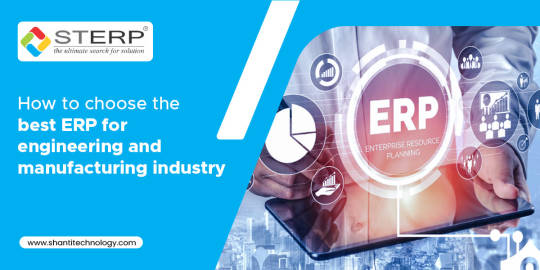
Why ERP is Crucial for Engineering and Manufacturing
ERP software integrates various business processes, including production, inventory management, supply chain, finance, and human resources. For engineering and manufacturing companies, ERP solutions are particularly vital because they:
Facilitate real-time data sharing across departments.
Enhance supply chain management.
Optimize production planning and scheduling.
Ensure compliance with industry standards.
Reduce operational costs.
Partnering with the right Engineering ERP software company ensures that your organization leverages these benefits to stay competitive in a dynamic market.
Steps to Choose the Best ERP for Engineering and Manufacturing
1. Understand Your Business Needs
Before exploring ERP solutions, evaluate your company’s specific requirements. Identify the pain points in your current processes and prioritize the features you need in an ERP system. Common features for engineering and manufacturing companies include:
Bill of Materials (BOM) management
Production planning and scheduling
Inventory control
Quality management
Financial reporting
Consulting with a reputed ERP software company can help you match your needs with the right features.
2. Look for Industry-Specific Solutions
Generic ERP software might not address the unique needs of the engineering and manufacturing sector. Opt for an ERP software in India that offers modules tailored to your industry. Such solutions are designed to handle specific challenges like multi-level BOM, project costing, and shop floor management.
3. Check Vendor Expertise
Choosing a reliable vendor is as important as selecting the software itself. Research ERP solution providers with a strong track record in serving engineering and manufacturing companies. Look for reviews, case studies, and client testimonials to gauge their expertise.
4. Evaluate Scalability and Flexibility
Your business will grow, and so will your operational requirements. Ensure that the ERP system you choose is scalable and flexible enough to accommodate future needs. The top 10 ERP software providers in India offer scalable solutions that can adapt to changing business demands.
5. Assess Integration Capabilities
An ERP system must integrate seamlessly with your existing tools, such as Computer-Aided Design (CAD) software, Customer Relationship Management (CRM) systems, and IoT devices. A well-integrated system reduces redundancies and enhances efficiency.
6. Prioritize User-Friendliness
A complex system with a steep learning curve can hinder adoption. Choose an ERP software with an intuitive interface and easy navigation. This ensures that your employees can use the system effectively without extensive training.
7. Consider Customization Options
No two businesses are alike. While standard ERP solutions offer core functionalities, some companies require customization to align with specific workflows. A trusted ERP software company in India can provide custom modules tailored to your unique needs.
8. Focus on Data Security
Engineering and manufacturing companies often deal with sensitive data. Ensure that the ERP solution complies with the latest security standards and offers robust data protection features.
9. Compare Pricing and ROI
While cost is an important factor, it should not be the sole criterion. Evaluate the long-term return on investment (ROI) offered by different ERP software. A slightly expensive but feature-rich solution from the best ERP software provider in India may deliver better value than a cheaper alternative with limited functionalities.
10. Test Before You Commit
Most ERP software companies offer free trials or demo versions. Use these opportunities to test the software in a real-world scenario. Gather feedback from your team and ensure the solution meets your expectations before finalizing your decision.
Benefits of Partnering with the Best ERP Software Providers in India
India is home to some of the leading ERP software providers in India, offering state-of-the-art solutions for the engineering and manufacturing sector. Partnering with a reputable provider ensures:
Access to advanced features tailored to your industry.
Reliable customer support.
Comprehensive training and implementation services.
Regular updates and enhancements to the software.
Companies like Shantitechnology (STERP) specialize in delivering cutting-edge ERP solutions that cater specifically to engineering and manufacturing businesses. With years of expertise, they rank among the top 10 ERP software providers in India, ensuring seamless integration and exceptional performance.
Conclusion
Selecting the right ERP software is a critical decision that can impact your company’s efficiency, productivity, and profitability. By understanding your requirements, researching vendors, and prioritizing features like scalability, integration, and security, you can find the perfect ERP solution for your engineering or manufacturing business.
If you are looking for a trusted ERP software company in India, consider partnering with a provider like STERP. As one of the best ERP software providers in India, STERP offers comprehensive solutions tailored to the unique needs of engineering and manufacturing companies. With their expertise, you can streamline your operations, improve decision-making, and stay ahead in a competitive market.
Get in touch with STERP – the leading Engineering ERP software company – to transform your business with a reliable and efficient ERP system. Take the first step toward a smarter, more connected future today!
#Manufacturing ERP software company#ERP solution provider#Engineering ERP software company#ERP software company#ERP software companies
6 notes
·
View notes